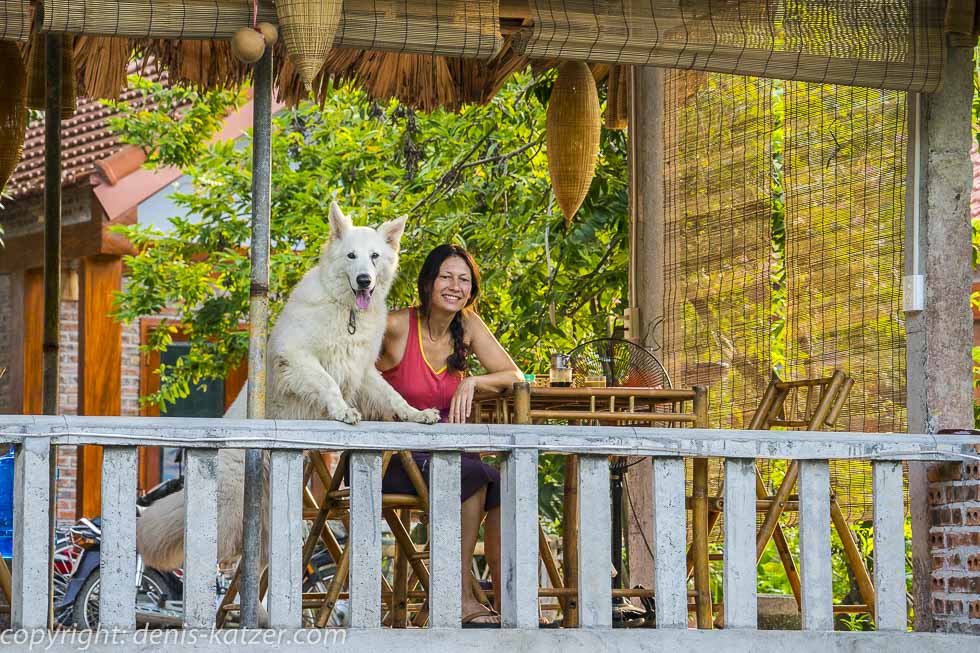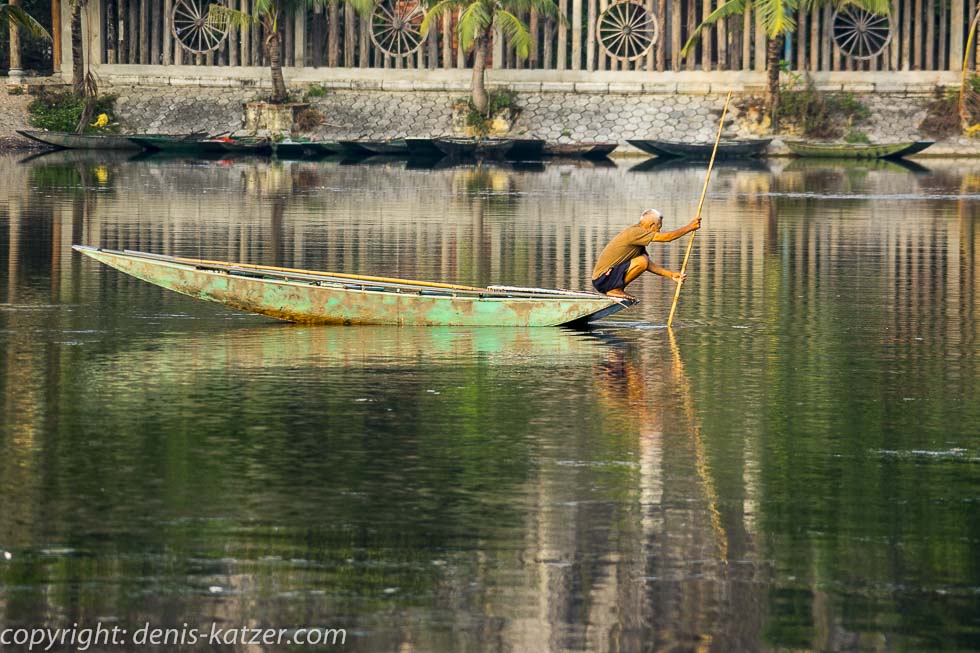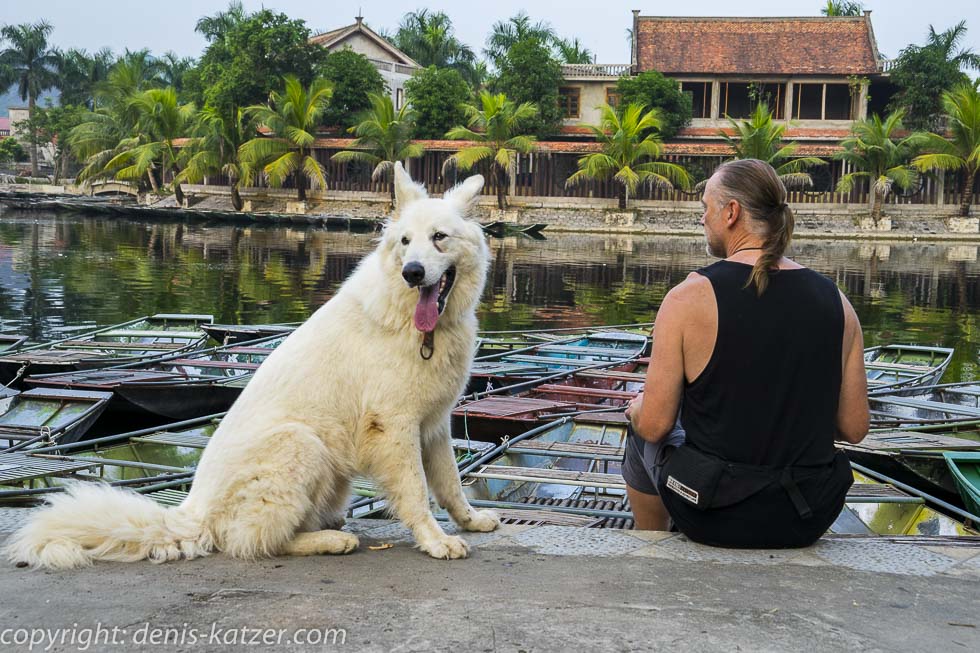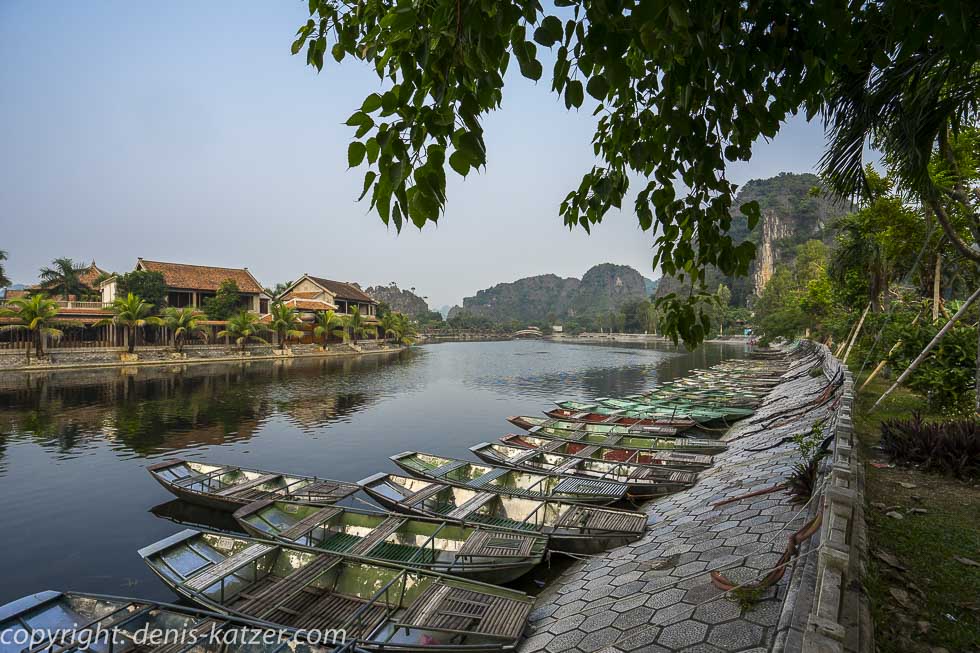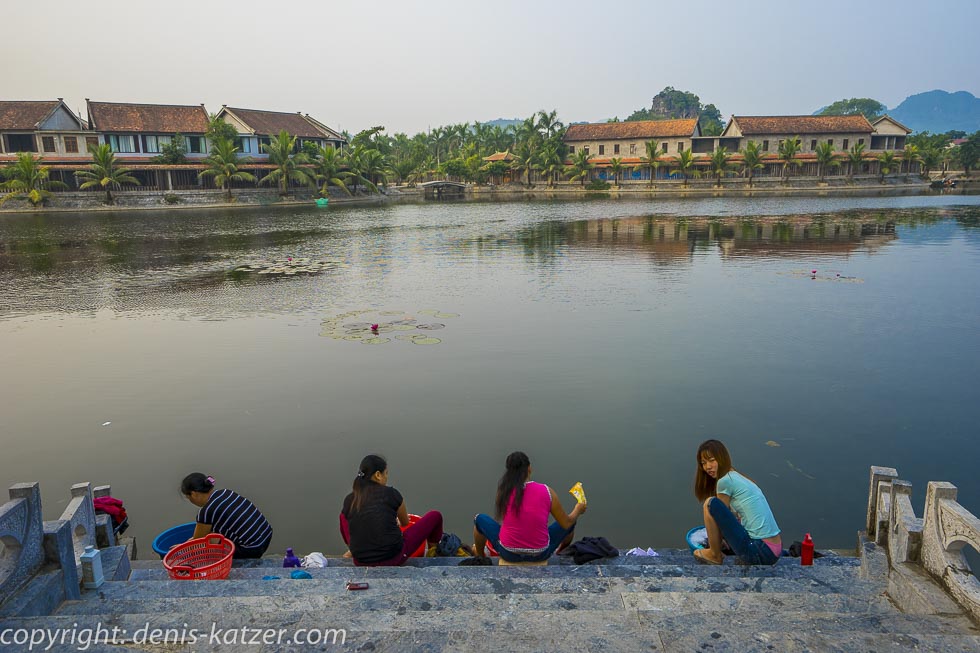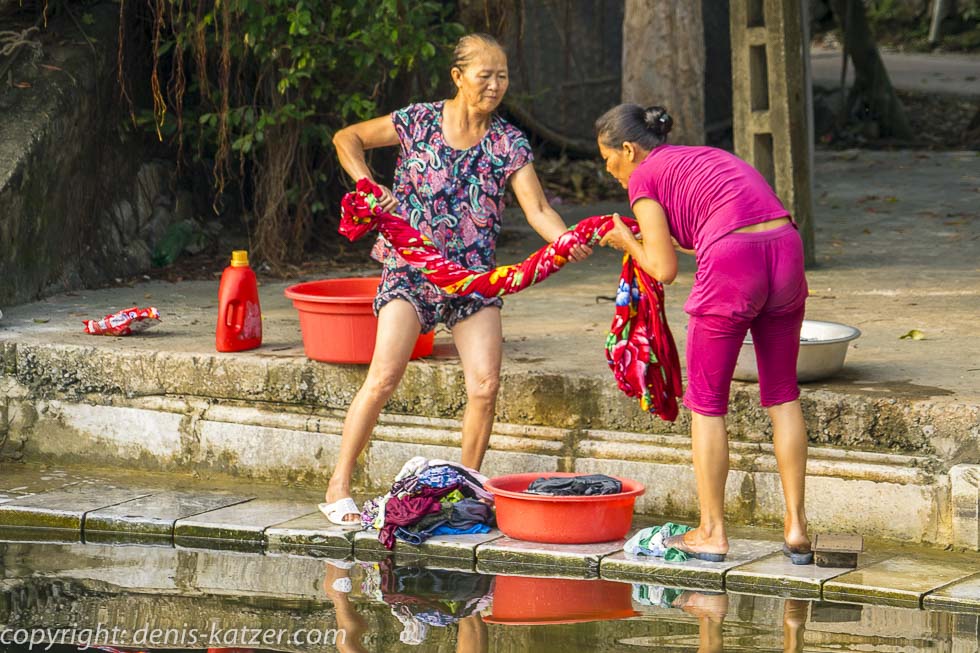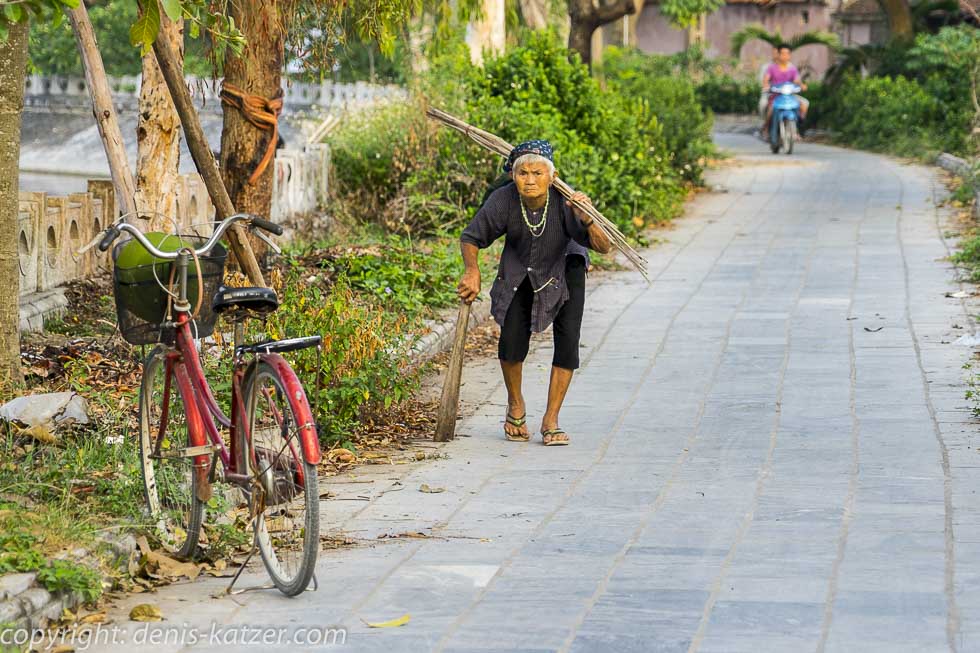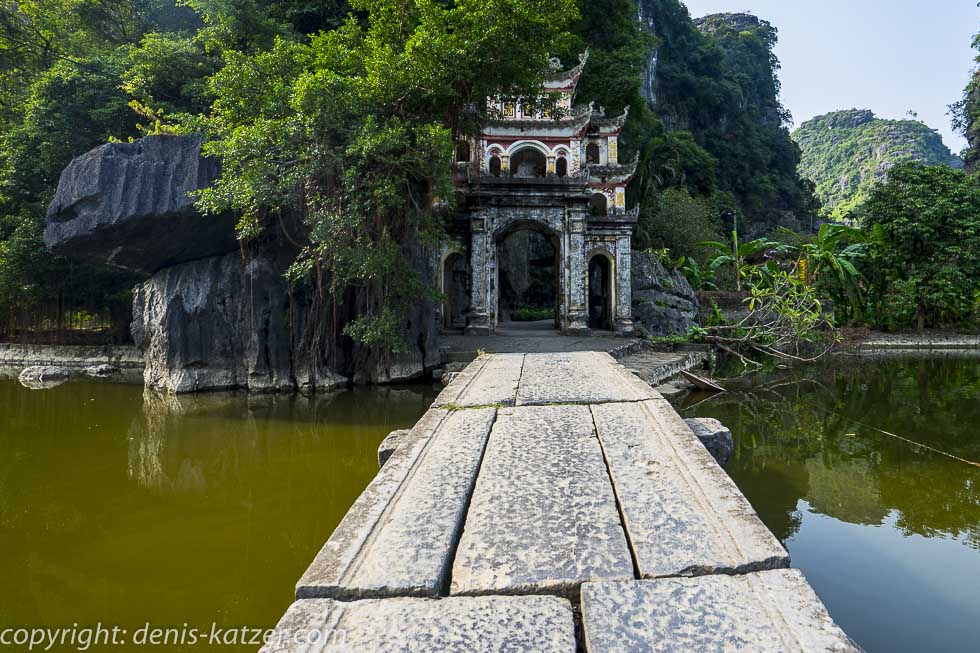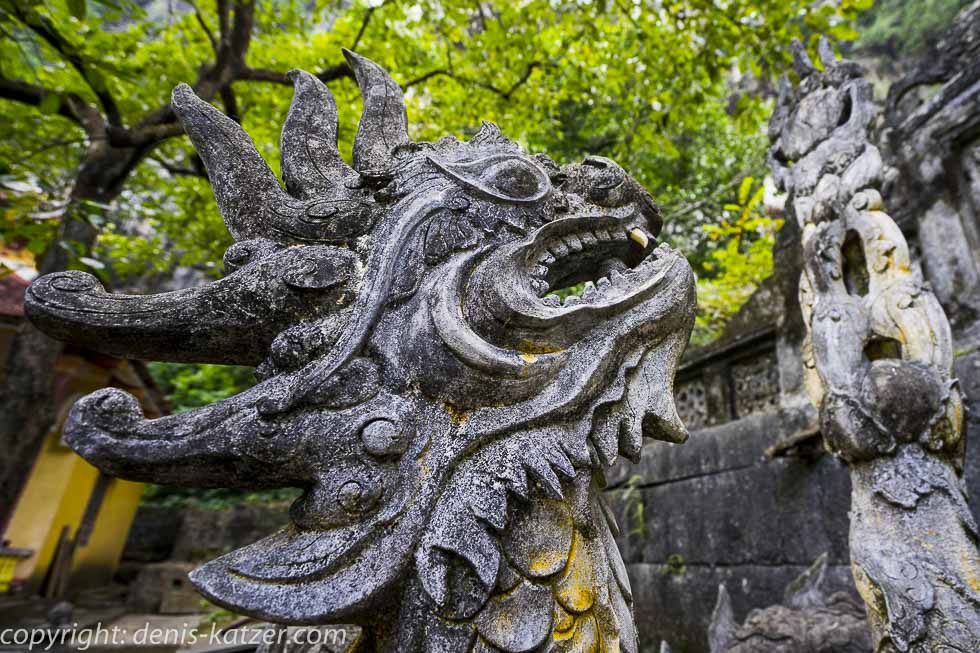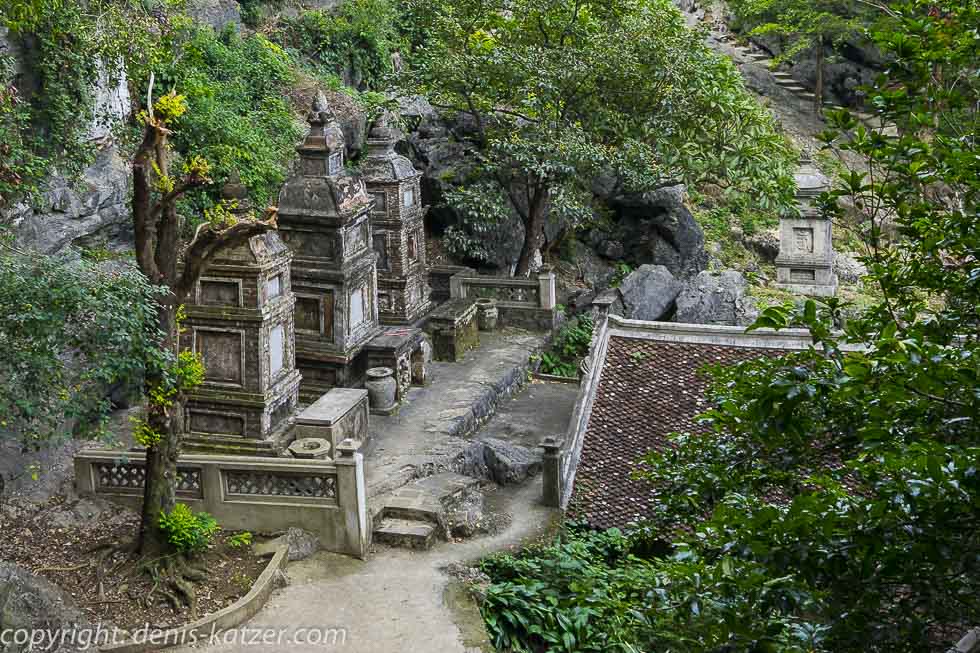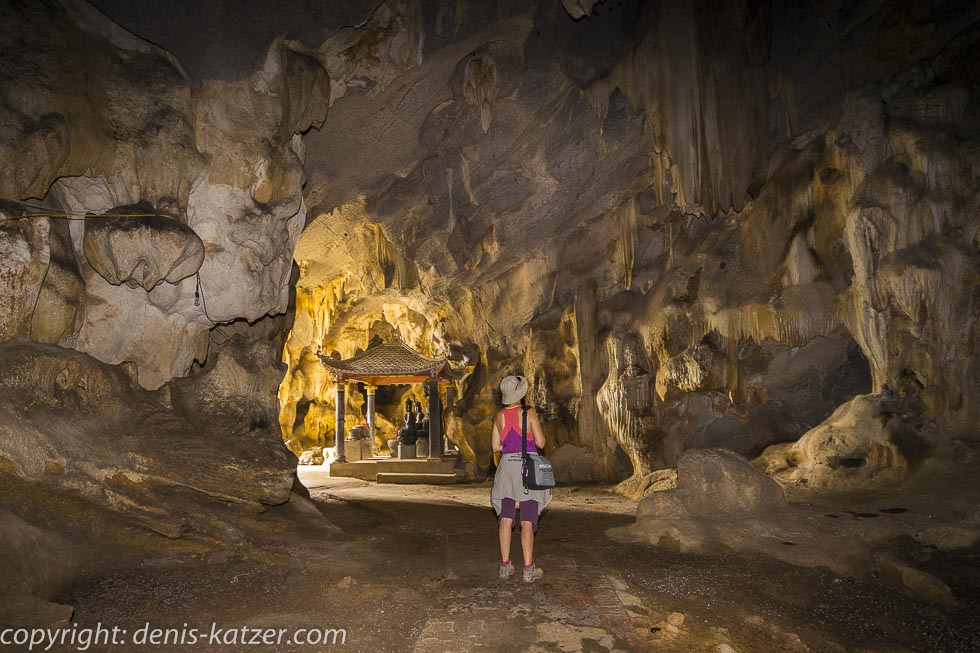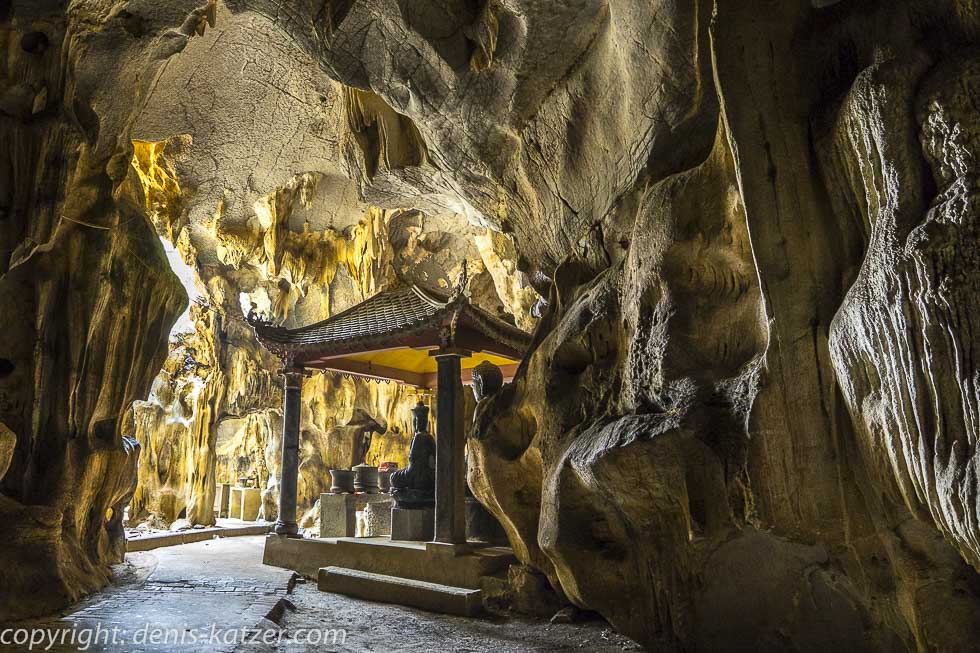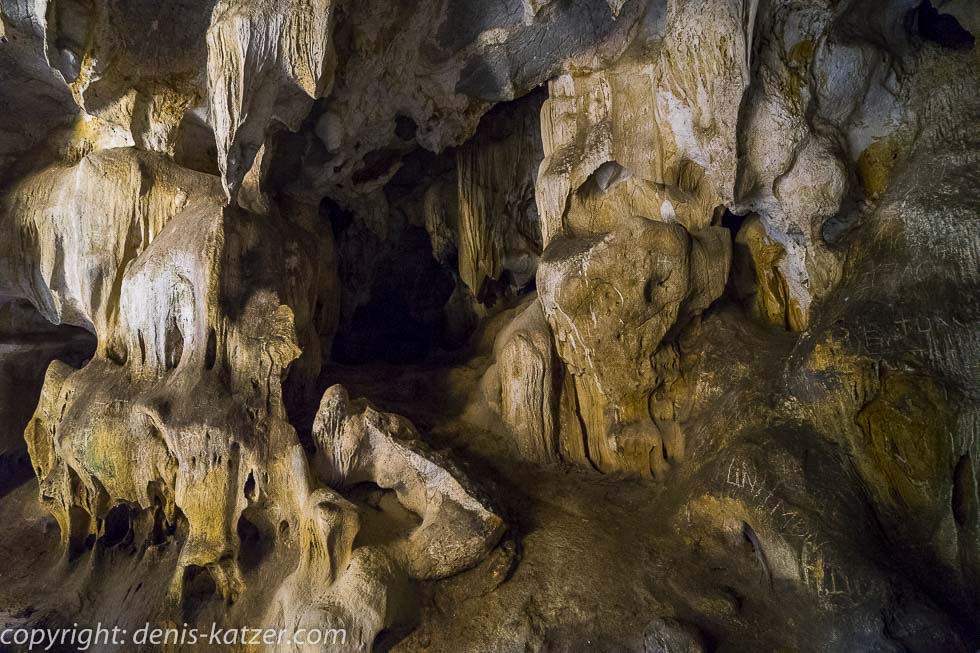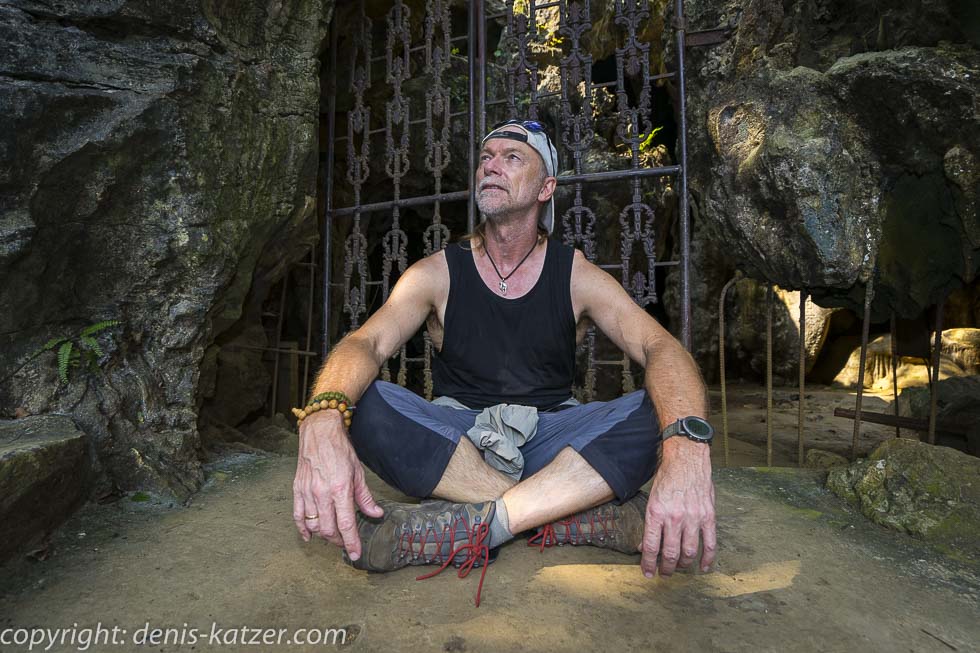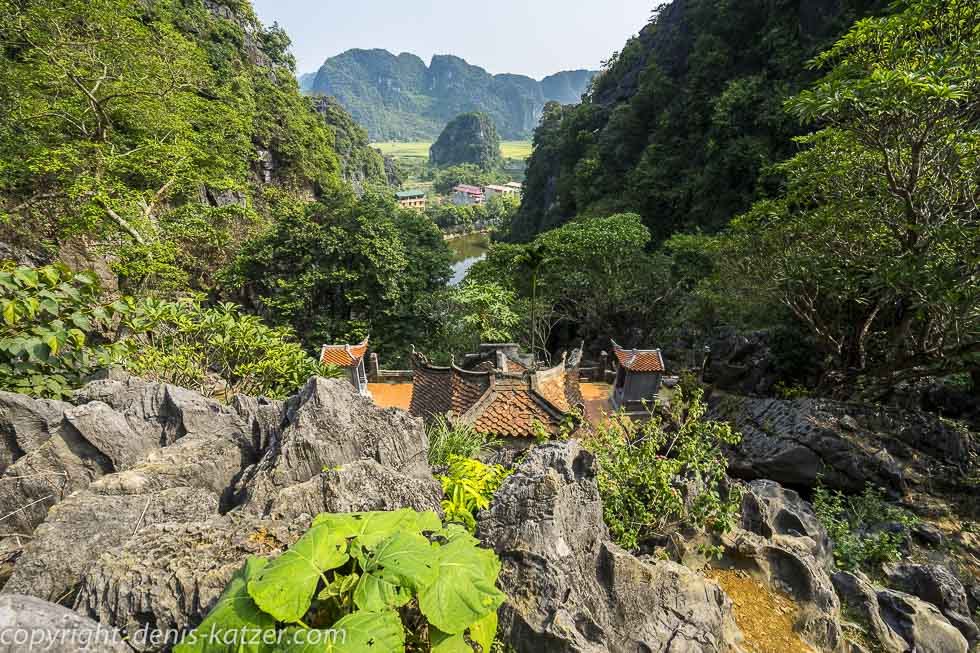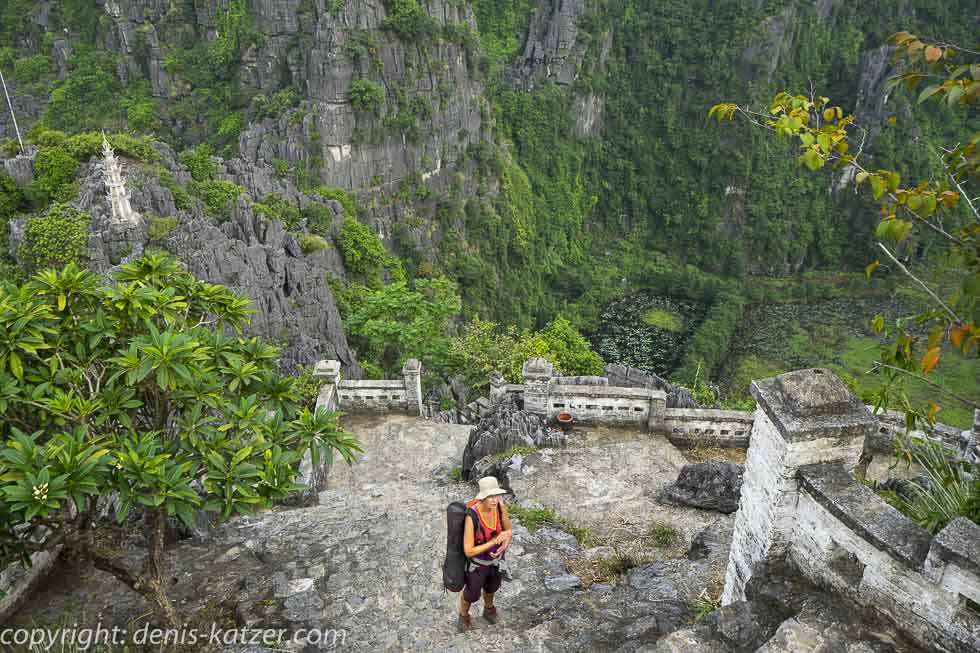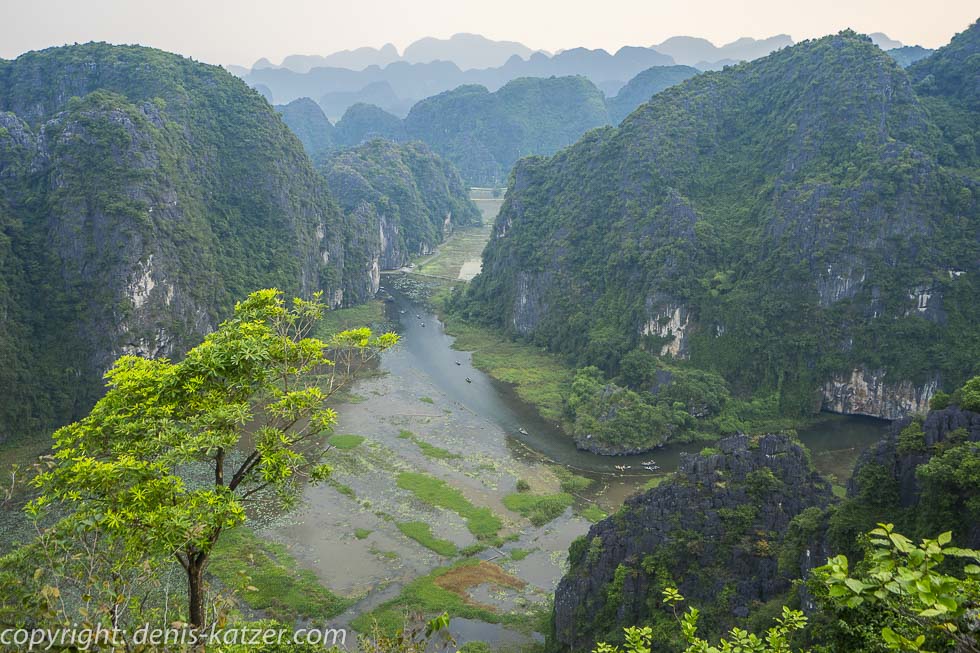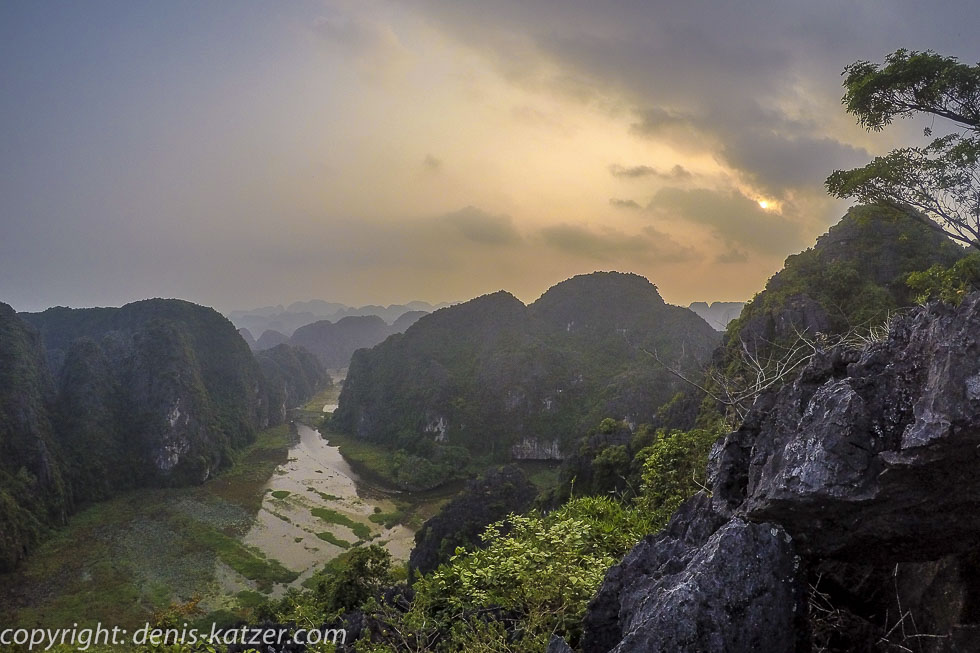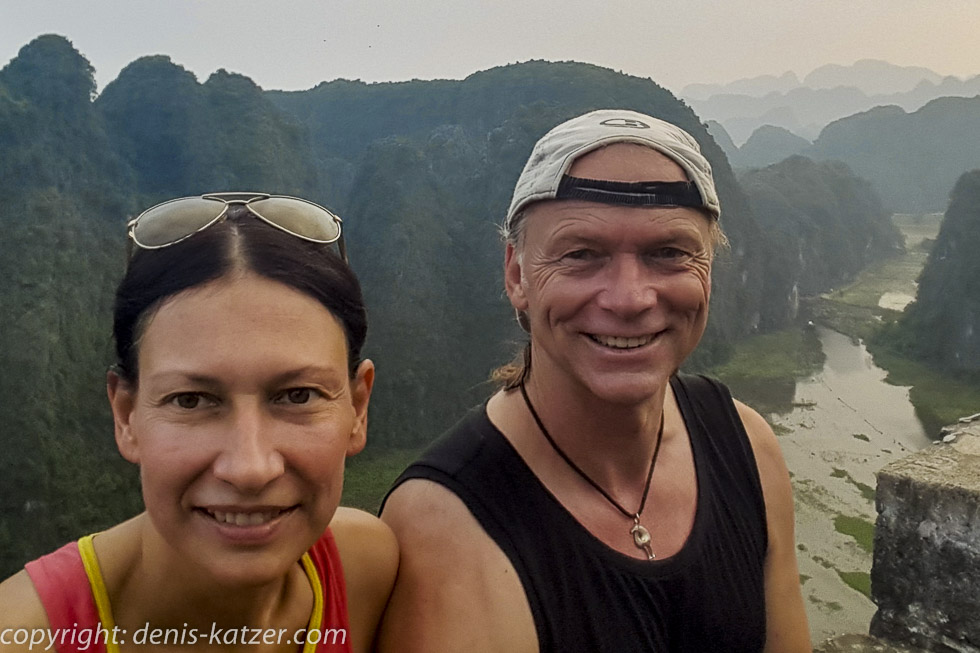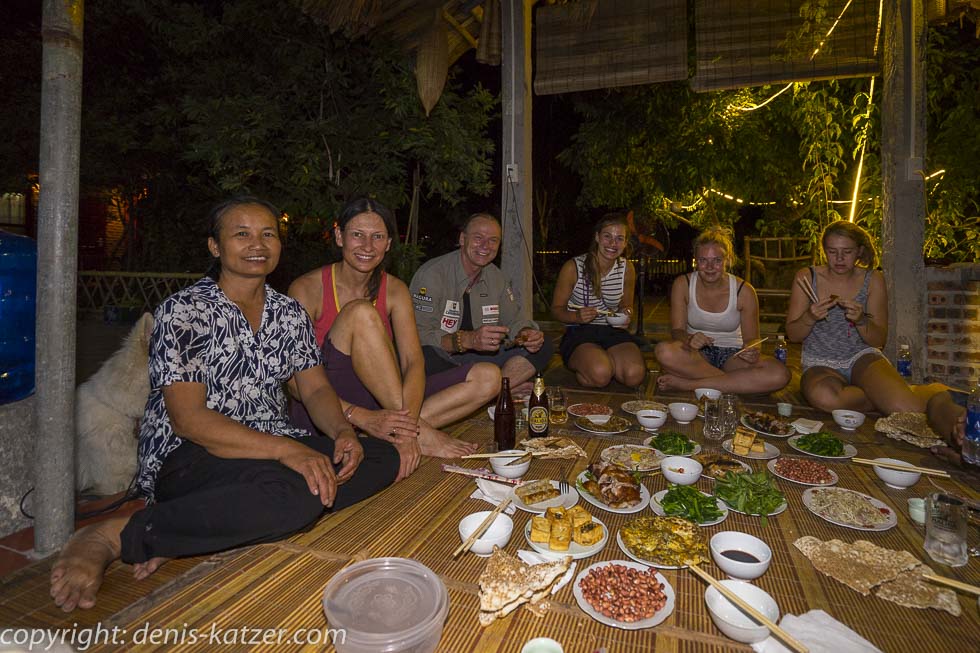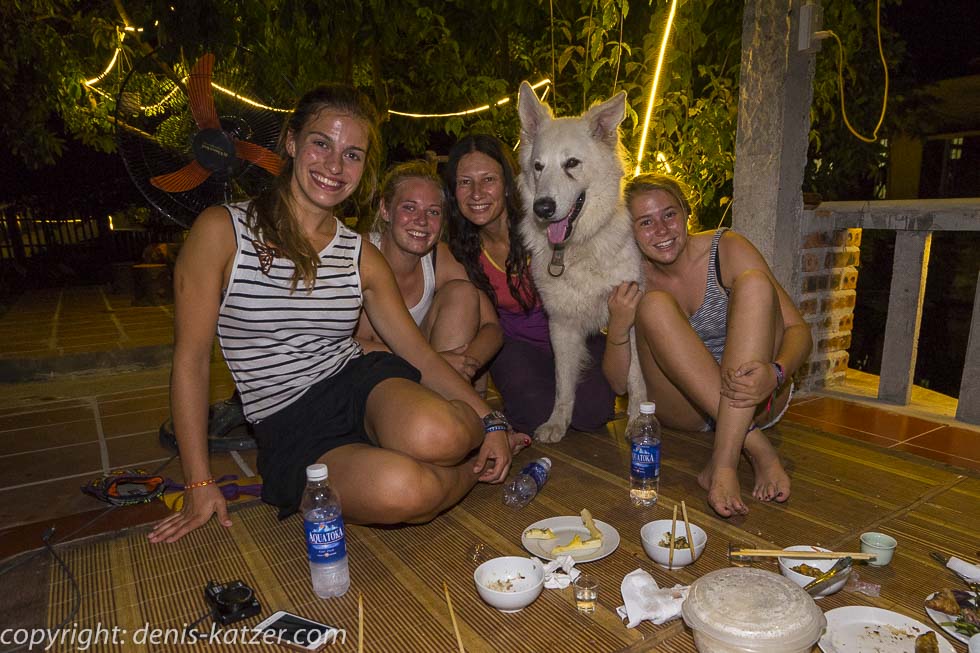
Mystical – dangerous brain constructs
N 20°13'01.7'' E 105°55'58.9''
Date:
10.10.2016
Day: 472
Country:
Vietnam
Province:
Ninh Bình
Location:
Ninh Binh
Latitude N:
20°13’01.7”
Longitude E:
105°55’58.9”
Daily kilometers:
Covered 45 km by moped
Total kilometers:
19,462 km
Soil condition:
Asphalt
Total altitude meters:
54.661 m
Sunrise:
05:49 pm
Sunset:
5:37 pm
Temperature day max:
37°C
Temperature day min:
24°C
(Photos of the diary entry can be found at the end of the text).
The sun casts its first gentle rays onto the dark surface of the Ngo Dong River. A couple pull their fish traps into the rowing boat, while an old man steers his rusty little boat across the water with a bamboo stick. Women sit on the shore washing clothes. Decades of field work have curved an old woman’s back into a question mark. Leaning on a broken paddle, she hobbles along the Ngo Dong, dragging a bundle of bamboo poles on her hump. Withered lotus flowers spill past, tiny fish nibble on them. Numerous boats, in which tourists are rowed to the caves of Tam Coc, line the shore for hundreds of meters. They pool silently on the smooth surface of the water. A breeze whispers down from the karst mountains, rippling the river ridge for a moment. The cock-a-doodle-doo competes with each other, announcing the virgin day. We sit with Ajaci on the riverbank and inhale another varied morning in Vietnam. “Let’s go back. I’m ravenous,” says Tanja. Johnny has lovingly laid the breakfast table. We drink sweetened Vietnamese coffee, eat bread, fried eggs and fresh pineapple.
It is still quite early as we rattle through the awakening alleyways of the nearby villages on our moped. We cross a narrow bridge carved out of solid stone and walk across a lotus blossom lake through the old portal of the Bich Dong Pagoda. As the sun is still climbing up the other side of the mountain, the pagoda from the Le Dynasty, built in 1428, is still in the shade. Apart from an old woman offering a few postcards for sale on a wobbly platform and three barking dogs, we are the only people present. We wander around a little lost. The old woman watches our every move. As we are about to leave, she points energetically upwards. Our eyes follow her outstretched arm. We put our heads back and see a few yawning black holes in the rock. “Is there more to see up there?” I wonder. “Nhiều ngôi chùa lên có”, (there are more pagodas up there) we understand. “Cảm ơn”, (thank you) we say and follow the steps, which we only notice now. “It actually continues here,” I realize, following the narrow path that leads behind a temple building into a cave. It gets darker and darker. Soon we can no longer see anything. “I don’t know if it’s a good idea to go deeper,” Tanja considers. “We should have brought a headlamp,” I say, groping a few meters further into the blackness. “There’s a staircase. We should explore where it leads.” “Without light? Just watch out. We’ll end up falling into a hole,” Tanja points out. I unpack the flash, place it on the camera and press the shutter release. The infrared light, which the flash uses to measure the distance, illuminates the steps in front of us for a moment. “Great idea,” praises Tanja. In this way, we get deeper and deeper into the cave. The ultrasonic waves of some bats whistle from rock face to rock face. The acrid smell of their droppings hangs in the damp, humid air. When we reach the top of the steps, we see a milky glimmer of light. “There must be an exit there,” I guess. Under the roof of an ancient pavilion, in the diffuse daylight, surrounded by rough rocks and stalactites, sit three Buddha statues. “Wow,” I whisper, impressed by the mystical scene. Walking through an iron forged gate, the cave releases us again. The hot rays of the sun, which have now risen over the ridges of the Ngu-Nhac mountains, hit us with their glistening light. Once we reach the top pagoda, we sit down on a rock and look down into the Hoa-Lu valley below us. No wonder the then King Le-Canh-Hung wrote a poem about this unique pagoda and the breathtaking landscape. “We should be grateful to the old woman down there and buy her a few postcards.” “Yes, without her advice we would have missed the main attraction,” Tanja agrees.
In the afternoon, like many visitors to this region, we climb to the summit above the Mua Caves. We are sitting next to our camera, which is shooting a time lapse, when we overhear the conversation of some tourists. “The fucking things have totally stabbed me”, a young Frenchman complains, pointing to his back with a quick hand gesture. “Oh man, look at that,” I nudge Tanja, who is gazing spellbound at the picturesque valley below us. The boy’s entire back is covered in hundreds and hundreds of mosquito bites. “That must itch like hell,” says a European woman. “It does.” “Well, I hope you haven’t caught malaria,” says a Spaniard. It doesn’t take long before we strike up a conversation with two travelers. “What, you’ve been in this region for four months?” the couple from Germany wonder. “Yes,” I reply and tell them about the fall from the bamboo bridge. “There,” I say, pointing to the joint protruding from the shoulder. “I hope we can get back on the bike soon, but it’s still very painful at the moment.” “Have you had it looked at by a doctor?” asks the German, who works as a surgeon in a clinic. “If I were you, I’d get another opinion. Don’t let a second joint form and you’ll have problems for the rest of your life,” his statement shocks me. A moment ago I was still in a good mood, enjoying the climb up the 500 steps to the viewpoint and taking photos, and now…. Is it possible that we will now have to interrupt our trip so that I can be examined and possibly operated on in Germany? That can’t be right. Or is it? And how should we organize this? We would have to leave our equipment in Mai Chau and get on a plane. But what do we do with Ajaci? It would certainly be too inconvenient to take him home and then bring him back to Vietnam. Above all, it would be extremely expensive. And how long would the recovery time be after an operation? Apart from the fact that no one can guarantee whether the operation will be successful, let alone whether the shoulder joint will hold afterwards? Would an operation perhaps even mean the end of this stage of the journey? However, I don’t have the slightest desire to have to carry around a chronic shoulder problem for the rest of my life.
Dejected, tormented by unpleasant thoughts and in silence, we ride back to Johnny’s homestay on the moped. “I don’t think we have to fly home. Our friend Hape said your shoulder would heal without an operation. He’s been right with his predictions for every one of our injuries so far. I trust him. But if we have to fly home, that’s okay with me too. We’ll find a solution to organize everything,” Tanja reassures me. “I’ll call Hape right away,” I say and send a message via WhatsApp. Less than five minutes later, the smartphone rings. “Hi Denis. You wanted to talk to me? I hope your shoulder is feeling better,” says our friend Hannspeter Meier (Hape), managing director, co-founder of the Reha- und Vitalzentrum in Nuremberg, sports physiotherapist in competitive sports, golf therapist and author. “Oh Hape, great that you called back so quickly. I’m in a mental downturn at the moment,” I say and tell him about the conversation with the surgeon. “With an acromioclavicular joint fracture, a second joint cannot form. This is only possible with collarbone fractures. Don’t worry about it. You’ll certainly be able to get back in the saddle soon and continue your journey. If you had a contract as a professional hockey player, you would have been back on the pitch a long time ago. Nevertheless, an injury like that takes at least six months to fully heal. So, everything is in the green zone.” Hape, who has cured all my aches and pains (sometimes numerous and serious injuries) since 1990, is for me without any exaggeration one of the best physiotherapists in Germany, who has not only helped us, but also many top-class athletes in the first national league in soccer, volleyball, handball, boxing, ice hockey, Olympic champions and many more with his competent expertise. “Thank you for this important conversation Hape.” “You’re welcome Denis. I hope you have a wonderful trip. And please give my regards to Tanja.”
I leave our room feeling refreshed. Standing by the river, I stretch both arms up into the night sky and say thank you again. It’s amazing how important the psyche is. How in some cases it can decide on the continuation of a trip, a project, whatever it may be. Sometimes it really is only positive thoughts that determine whether you lose or win, whether you die or live. It is often brain constructs that decide on sadness and happiness and determine our lives. The conversation with the surgeon showed me how quickly a situation can turn from positive to negative, although the man certainly only wanted the best for me. The conversation showed me once again how important a healthy mind is and that just a few words are enough to cloud it. It showed me once again how powerful thoughts are, how strong words can be when they find the right breeding ground. It ultimately showed me again how important it is to handle words sensitively and carefully and how important it is to use a so-called word filter, even if this is not always easy.
“Denis, would you like to celebrate with us again? We’re celebrating our second housewarming today,” Johnny’s words startle me as he suddenly stands behind me. “With pleasure. I can’t imagine anything better!” I laugh with relief…
If you would like to find out more about our adventures, you can find our books under this link.
The live coverage is supported by the companies Gesat GmbH: www.gesat.com and roda computer GmbH http://roda-computer.com/ The satellite telephone Explorer 300 from Gesat and the rugged notebook Pegasus RP9 from Roda are the pillars of the transmission. Pegasus RP9 from Roda are the pillars of the transmission.
